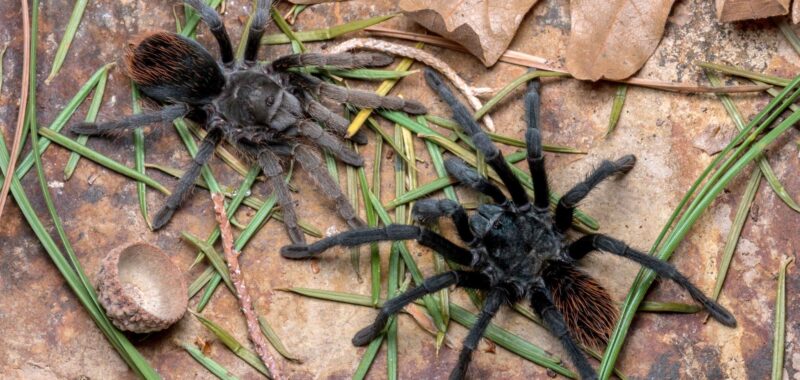A newly discovered tarantula living in the forests of Arizona’s Chiricahua Mountains can withstand high elevations and frigid winters—but humanity’s advance on the region could already be threatening its existence.
Much like the Galapagos Islands, the Chiricacuas are known for their unique, endemic biodiversity. Located in the Madrean Archipelago that stretches between the southwestern US and northwest Mexico, the mountainous region is home to pockets of high altitude forests divided by lowland deserts and grasslands. These isolated Chiricacuan environments helped earn its nickname, the Madrean Sky Islands, because each separate area contains wide arrays of animal life that can live there. As a research team from the University of Idaho and Millsaps College recently learned, at least one of those “islands” contains a previously unknown tarantula species.

“We often hear about new species being discovered from remote corners of Earth, but it is remarkable that these spiders are found in our own backyard, albeit in somewhat difficult-to-access areas of our backyard,” Chris Hamilton, a University of Idaho assistant professor and co-author of a study published on August 16 in the journal, ZooKeys, said in an accompanying statement.
Aphonopelma jacobii is now the 30th tarantula variety known to exist in the US. Named after the paper authors’ close friend and colleague, Michael Jacobi, A. jacobii is a small, black and gray spider featuring bright red abdominal hairs. Its larger family, Aphonopelma, is the most species-diverse tarantula genus ever documented. Unfortunately, researchers worry this diversity may be threatened by a number of external factors—all of which are the result of human interference.
“With Earth in the midst of a human-mediated extinction crisis, it is astonishing how little we know about our planet’s biodiversity, even for conspicuous and charismatic groups such as tarantulas,” Hamilton continued.
[Related: Meet the first electric blue tarantula known to science.]
Climate change is likely the most pressing danger facing A. jacobii. Researchers note previous studies indicate the Madrean Sky Islands will face deteriorating forest conditions over the next few decades as temperatures rise and annual precipitation levels decrease. These tarantulas, which evolved to thrive in the cooler, more humid mountain forests, “will likely become extinct as suitable habitat disappears.”
Brent Hendrixson, a biology professor at Millsaps College and study co-lead author, also names human expansion into the San Simon Valley and Portal areas, wildfires, and destructive activities like offroad vehicles and camping as potential hazards for the spiders. Meanwhile, collector interest in the new species could prove harmful to their survival.

“[T]here is some concern that these tarantulas will be exploited for the exotic pet trade due to their rarity, striking coloration, and docile disposition,” Hendrixson warns. “We must consider the impact that unethical collectors might have on these spiders when determining the threats to this species and the implications for its conservation.”
Unfortunately, A. jacobii is likely emblematic of a growing trend in conservation—with the excitement for every newly discovered species now comes additional concerns for its future.

